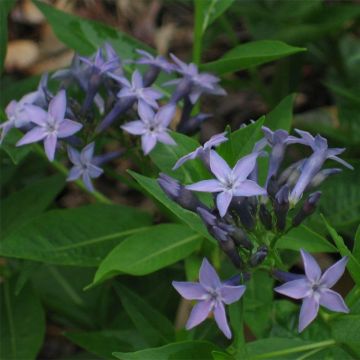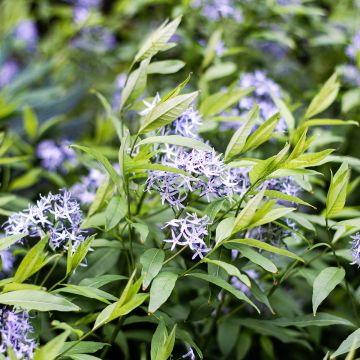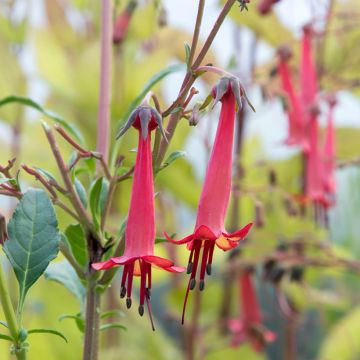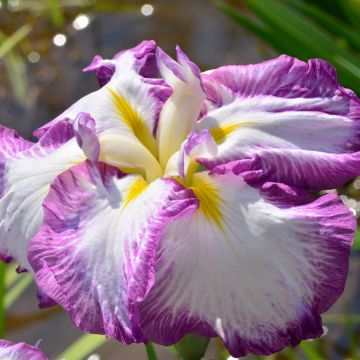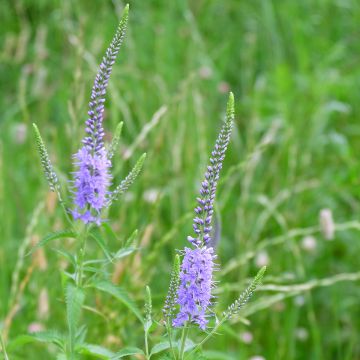

Amsonia ciliata Ernst Pagels


Amsonia ciliata Ernst Pagels
Amsonia ciliata Ernst Pagels
Amsonia xciliata Ernst Pagels
Eastern Bluestar
Les trois épis sont arrivés très vite et dans un emballage parfait, je les ai immédiatement repiqués au jardin dans un endroit où je peux les surveiller. J'attends maintenant de passer l'hiver pour voir leur évolution.
Jeannette, 05/10/2021
This item cannot be shipped to the selected country
Delivery charge from €5.90
More information
Schedule delivery date,
and select date in basket
This plant carries a 12 months recovery warranty
More information
We guarantee the quality of our plants for a full growing cycle, and will replace at our expense any plant that fails to recover under normal climatic and planting conditions.
From €5.90 for pickup delivery and €6.90 for home delivery
Express home delivery from €8.90.
Does this plant fit my garden?
Set up your Plantfit profile →
Description
Amsonia 'Ernst Pagels' is a hybrid between the finely cut-leaved and slow-growing Amsonia hubrichtii and the slightly more robust A. ciliata. The result of this cross is a graceful plant with light foliage that takes on beautiful yellow tones in autumn. At the beginning of summer, this hardy and long-lasting perennial is adorned with clusters of relatively large star-shaped flowers, which are a very bright light lilac blue colour. This perennial, both dense and airy, will bring a lot of lightness and rustic charm to flower beds, when preferably planted in semi-shaded areas.
Amsonia Ernst Pagels, obtained in the Netherlands, is a plant from the Apocynaceae family, just like periwinkle. These Amsonias are native to the United States. They are often found growing in sandy and loamy soils, in slightly humid environments. The 'Ernst Pagels' variety was named in honour of a famous German perennial breeder. The plant develops numerous stems that form bushy and very flexible clumps, reaching about 40 cm (16in) in height when in bloom and over 50 cm (20in) in width. This plant sometimes takes a little time to establish, but it lives for many years. Its long light blue buds open into small lilac-blue stars that resemble widely open trumpets. They are grouped in panicles and bloom abundantly between June and July, for several weeks. The leaves are entire, narrow, and thin. They are a slightly acidic green colour and are 3 to 6 cm (1 to 2in) long, very attractive even outside of the flowering period. The deciduous foliage takes on a beautiful autumn colour, which is bright yellow, before disappearing in winter.
Very hardy, Amsonia grow easily in partial shade, in good garden soil that does not dry out too much in summer. Underused in gardens, Amsonia, like an ornamental grass, enhances all its neighbours. You can easily incorporate this Ernst Pagels variety into a perennial flower bed with a natural habit, along with daylilies, willowherbs, ironweeds, lilies, perennial geraniums, or with grasses like autumn-coloured Miscanthus ('Sioux', 'Purpurescens'). It is an excellent plant for semi-shade, to be combined with bleeding hearts, columbines, and Japanese anemones, which will take over in August-September. Planted in groups, in front of a mix of baptisias and sunflowers, the Amsonia Ernst Pagels creates an evocative and wild scene, as if from another continent.
Report an error about the product description
Amsonia ciliata Ernst Pagels in pictures
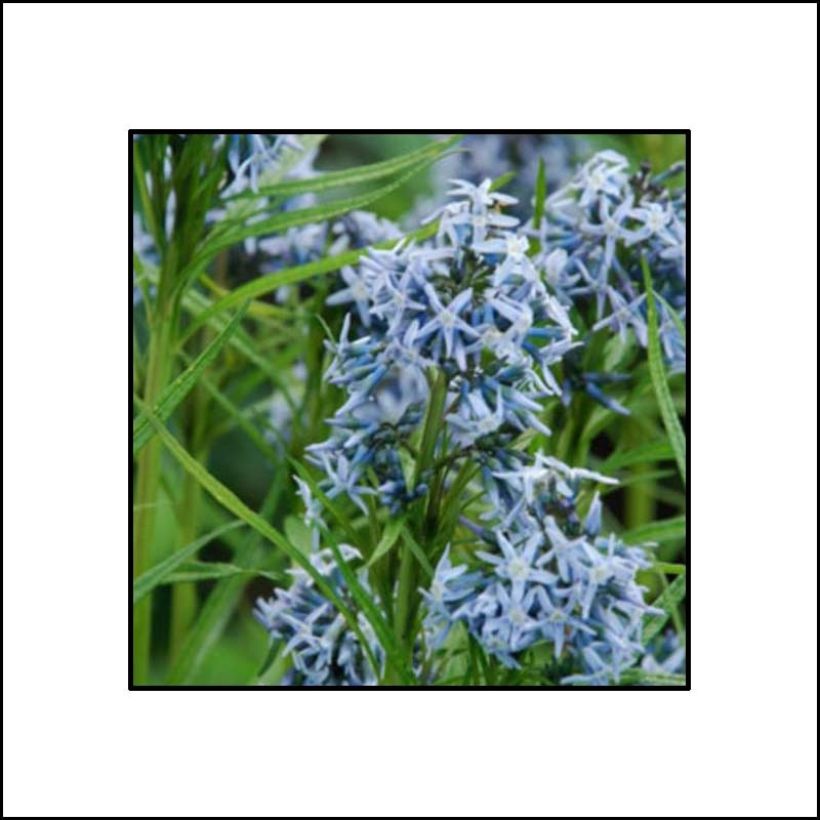

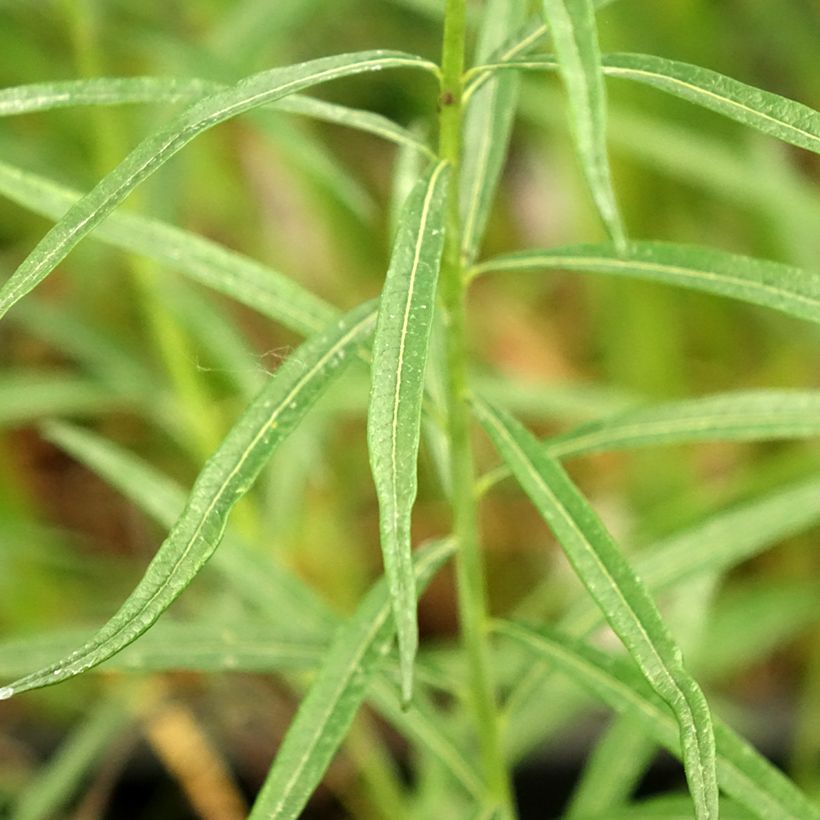

Flowering
Foliage
Plant habit
Botanical data
Amsonia
xciliata
Ernst Pagels
Apocynaceae
Eastern Bluestar
Cultivar or hybrid
Other Amsonia
Planting and care
Easy to grow in a fresh, light or sandy, loamy or limestone soil, which preferably well-drained, as this plant deteriorates in excessively wet soil in winter. It thrives in partial shade or non-scorching sunlight.
Planting period
Intended location
Care
-
, onOrder confirmed
Reply from on Promesse de fleurs
Summer flowering perennials
Haven't found what you were looking for?
Hardiness is the lowest winter temperature a plant can endure without suffering serious damage or even dying. However, hardiness is affected by location (a sheltered area, such as a patio), protection (winter cover) and soil type (hardiness is improved by well-drained soil).

Photo Sharing Terms & Conditions
In order to encourage gardeners to interact and share their experiences, Promesse de fleurs offers various media enabling content to be uploaded onto its Site - in particular via the ‘Photo sharing’ module.
The User agrees to refrain from:
- Posting any content that is illegal, prejudicial, insulting, racist, inciteful to hatred, revisionist, contrary to public decency, that infringes on privacy or on the privacy rights of third parties, in particular the publicity rights of persons and goods, intellectual property rights, or the right to privacy.
- Submitting content on behalf of a third party;
- Impersonate the identity of a third party and/or publish any personal information about a third party;
In general, the User undertakes to refrain from any unethical behaviour.
All Content (in particular text, comments, files, images, photos, videos, creative works, etc.), which may be subject to property or intellectual property rights, image or other private rights, shall remain the property of the User, subject to the limited rights granted by the terms of the licence granted by Promesse de fleurs as stated below. Users are at liberty to publish or not to publish such Content on the Site, notably via the ‘Photo Sharing’ facility, and accept that this Content shall be made public and freely accessible, notably on the Internet.
Users further acknowledge, undertake to have ,and guarantee that they hold all necessary rights and permissions to publish such material on the Site, in particular with regard to the legislation in force pertaining to any privacy, property, intellectual property, image, or contractual rights, or rights of any other nature. By publishing such Content on the Site, Users acknowledge accepting full liability as publishers of the Content within the meaning of the law, and grant Promesse de fleurs, free of charge, an inclusive, worldwide licence for the said Content for the entire duration of its publication, including all reproduction, representation, up/downloading, displaying, performing, transmission, and storage rights.
Users also grant permission for their name to be linked to the Content and accept that this link may not always be made available.
By engaging in posting material, Users consent to their Content becoming automatically accessible on the Internet, in particular on other sites and/or blogs and/or web pages of the Promesse de fleurs site, including in particular social pages and the Promesse de fleurs catalogue.
Users may secure the removal of entrusted content free of charge by issuing a simple request via our contact form.
The flowering period indicated on our website applies to countries and regions located in USDA zone 8 (France, the United Kingdom, Ireland, the Netherlands, etc.)
It will vary according to where you live:
- In zones 9 to 10 (Italy, Spain, Greece, etc.), flowering will occur about 2 to 4 weeks earlier.
- In zones 6 to 7 (Germany, Poland, Slovenia, and lower mountainous regions), flowering will be delayed by 2 to 3 weeks.
- In zone 5 (Central Europe, Scandinavia), blooming will be delayed by 3 to 5 weeks.
In temperate climates, pruning of spring-flowering shrubs (forsythia, spireas, etc.) should be done just after flowering.
Pruning of summer-flowering shrubs (Indian Lilac, Perovskia, etc.) can be done in winter or spring.
In cold regions as well as with frost-sensitive plants, avoid pruning too early when severe frosts may still occur.
The planting period indicated on our website applies to countries and regions located in USDA zone 8 (France, United Kingdom, Ireland, Netherlands).
It will vary according to where you live:
- In Mediterranean zones (Marseille, Madrid, Milan, etc.), autumn and winter are the best planting periods.
- In continental zones (Strasbourg, Munich, Vienna, etc.), delay planting by 2 to 3 weeks in spring and bring it forward by 2 to 4 weeks in autumn.
- In mountainous regions (the Alps, Pyrenees, Carpathians, etc.), it is best to plant in late spring (May-June) or late summer (August-September).
The harvesting period indicated on our website applies to countries and regions in USDA zone 8 (France, England, Ireland, the Netherlands).
In colder areas (Scandinavia, Poland, Austria...) fruit and vegetable harvests are likely to be delayed by 3-4 weeks.
In warmer areas (Italy, Spain, Greece, etc.), harvesting will probably take place earlier, depending on weather conditions.
The sowing periods indicated on our website apply to countries and regions within USDA Zone 8 (France, UK, Ireland, Netherlands).
In colder areas (Scandinavia, Poland, Austria...), delay any outdoor sowing by 3-4 weeks, or sow under glass.
In warmer climes (Italy, Spain, Greece, etc.), bring outdoor sowing forward by a few weeks.

































